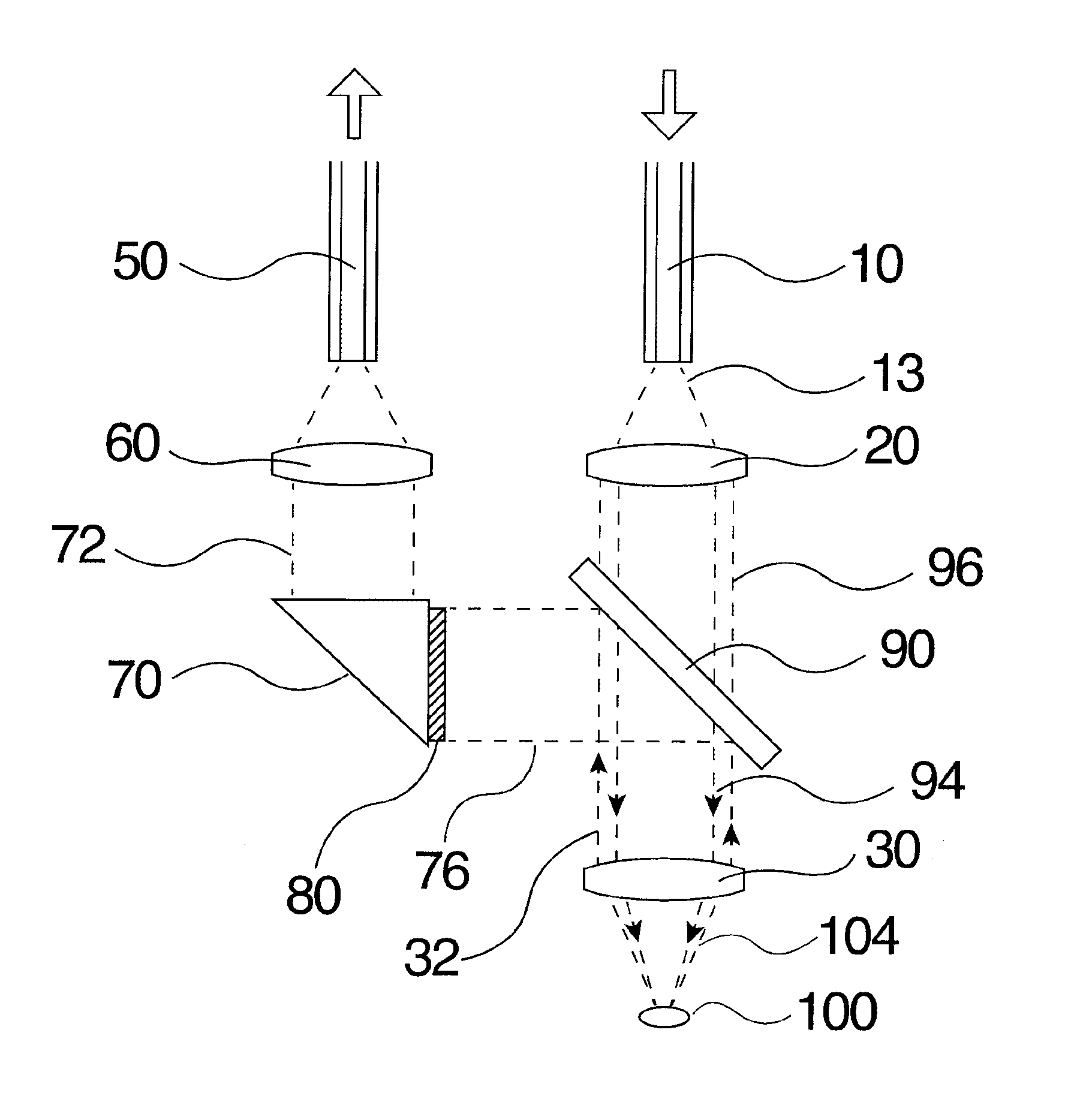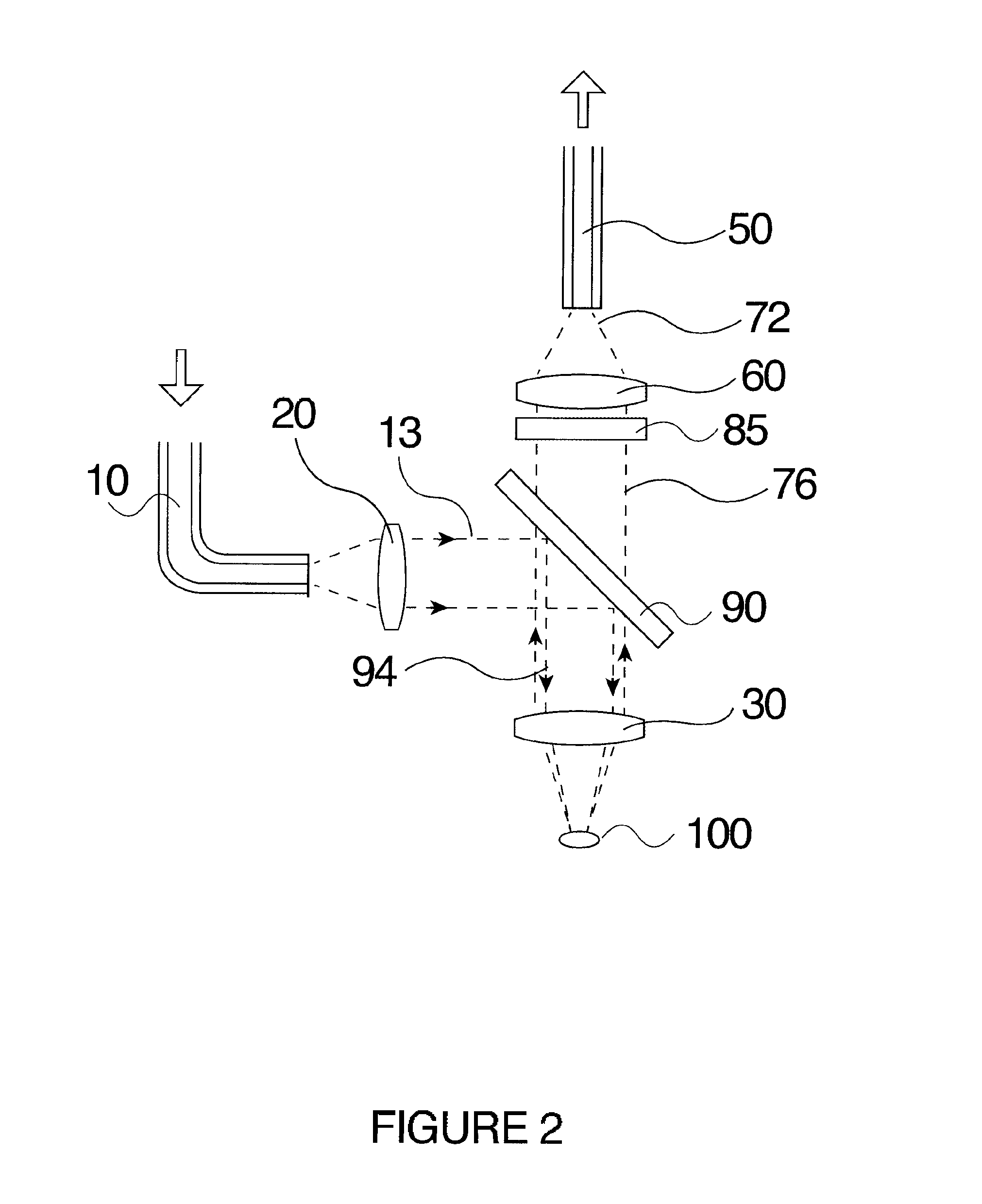Fiber optic probe for remote spectroscopy
a fiber optic probe and remote spectroscopy technology, applied in the field of fiber optic probes, can solve the problems of limited useful depth of focus of the probe, no advantage of collecting light, and difficult manufacturing, and achieve the effect of improving throughpu
- Summary
- Abstract
- Description
- Claims
- Application Information
AI Technical Summary
Benefits of technology
Problems solved by technology
Method used
Image
Examples
Embodiment Construction
[0069]The present invention relates to a fiber optic probe. The fiber optic probe may be lensed and filtered and comprise two coaxial but optically isolated and independent beam paths.
[0070]The following description is of a preferred embodiment.
[0071]The headings provided are not meant to be limiting of the various embodiments of the invention. Terms such as “comprises”, “comprising”, “comprise”, “includes”, “including” and “include” are not meant to be limiting. In addition, the use of the singular includes the plural, and “or” means “and / or” unless otherwise stated. Unless otherwise defined herein, all technical and scientific terms used herein have the same meaning as commonly understood by one of ordinary skill in the art.
[0072]The present invention provides a fiber optic probe assembly comprising, a first optical system and a second optical system. The first and second optical systems are optically isolated and are comprised of separate optical components. The first optical sys...
PUM
 Login to View More
Login to View More Abstract
Description
Claims
Application Information
 Login to View More
Login to View More - R&D
- Intellectual Property
- Life Sciences
- Materials
- Tech Scout
- Unparalleled Data Quality
- Higher Quality Content
- 60% Fewer Hallucinations
Browse by: Latest US Patents, China's latest patents, Technical Efficacy Thesaurus, Application Domain, Technology Topic, Popular Technical Reports.
© 2025 PatSnap. All rights reserved.Legal|Privacy policy|Modern Slavery Act Transparency Statement|Sitemap|About US| Contact US: help@patsnap.com



